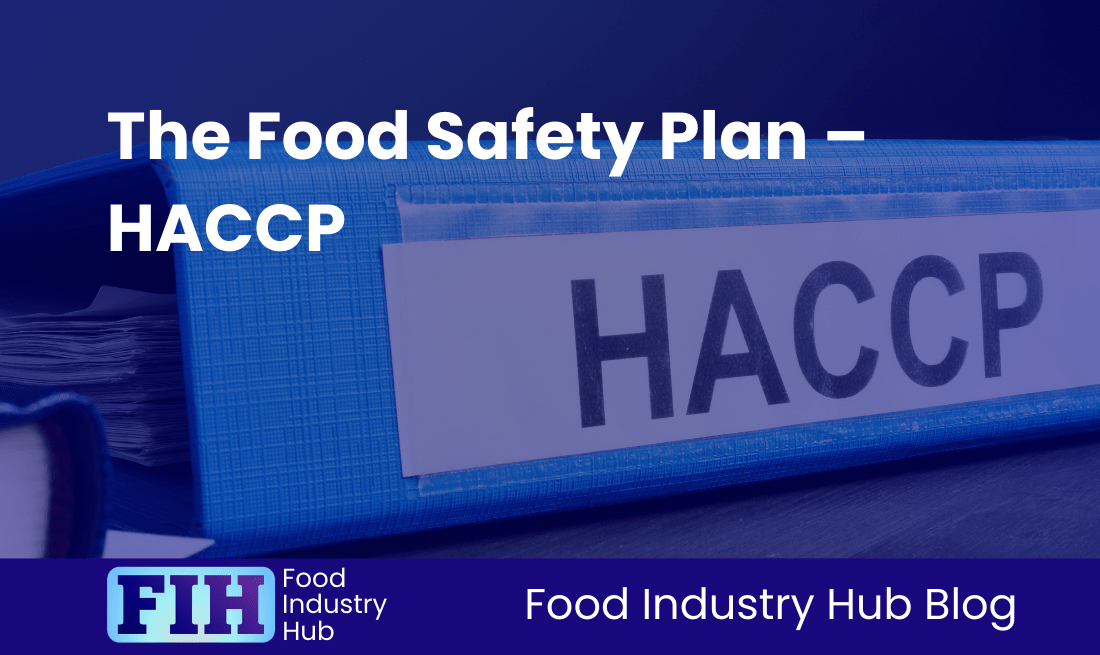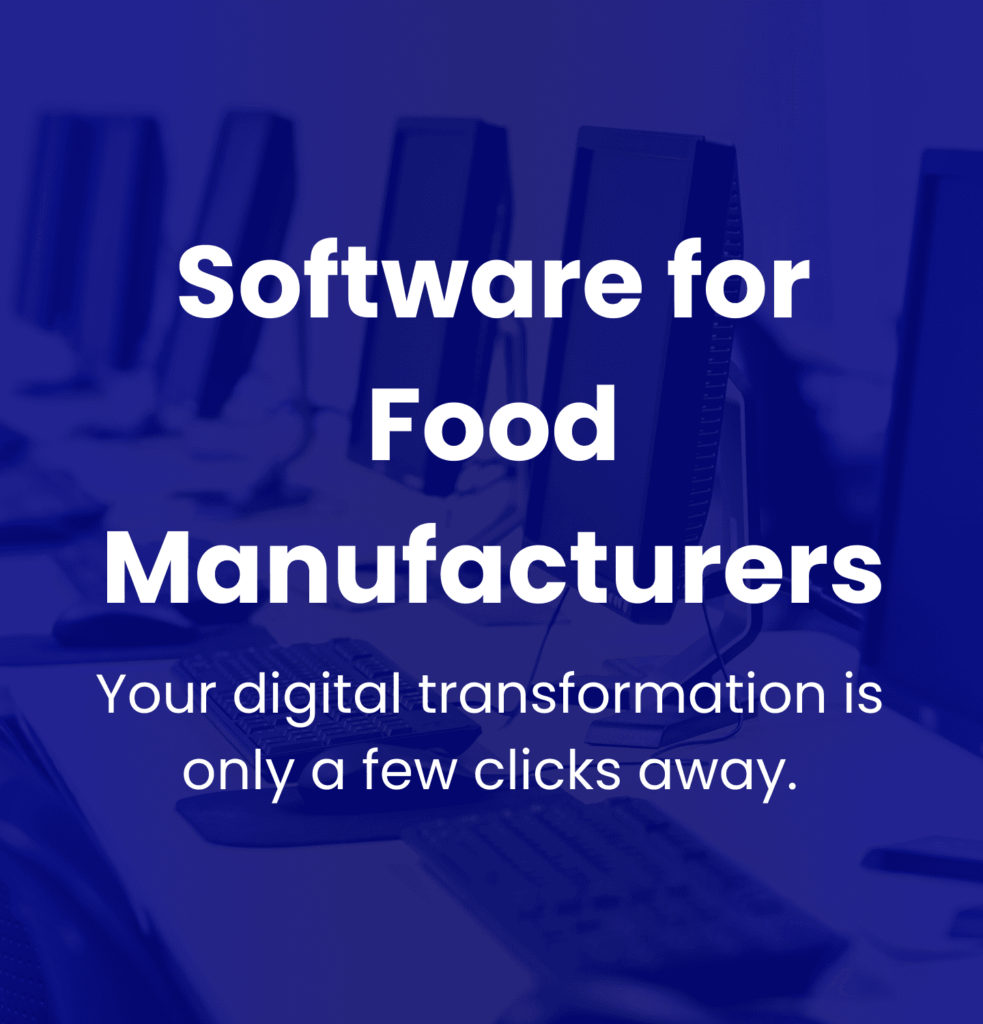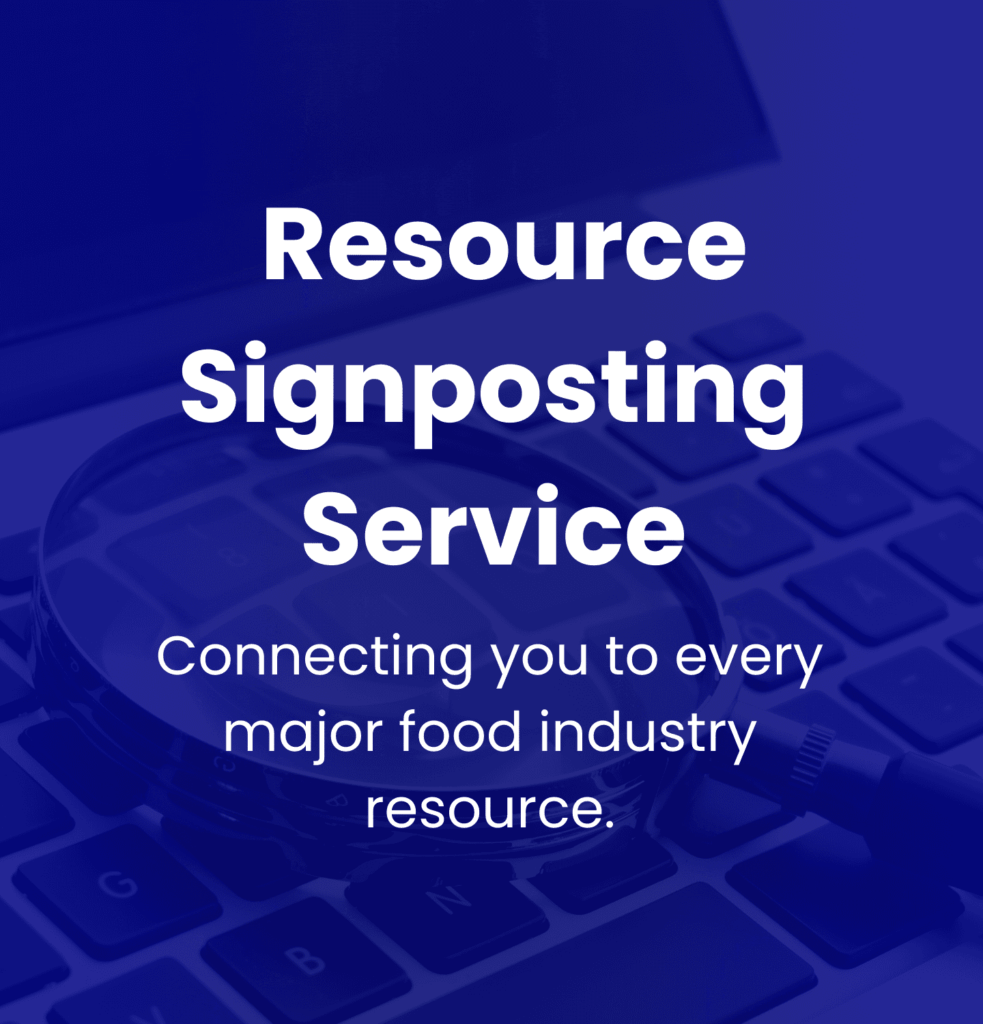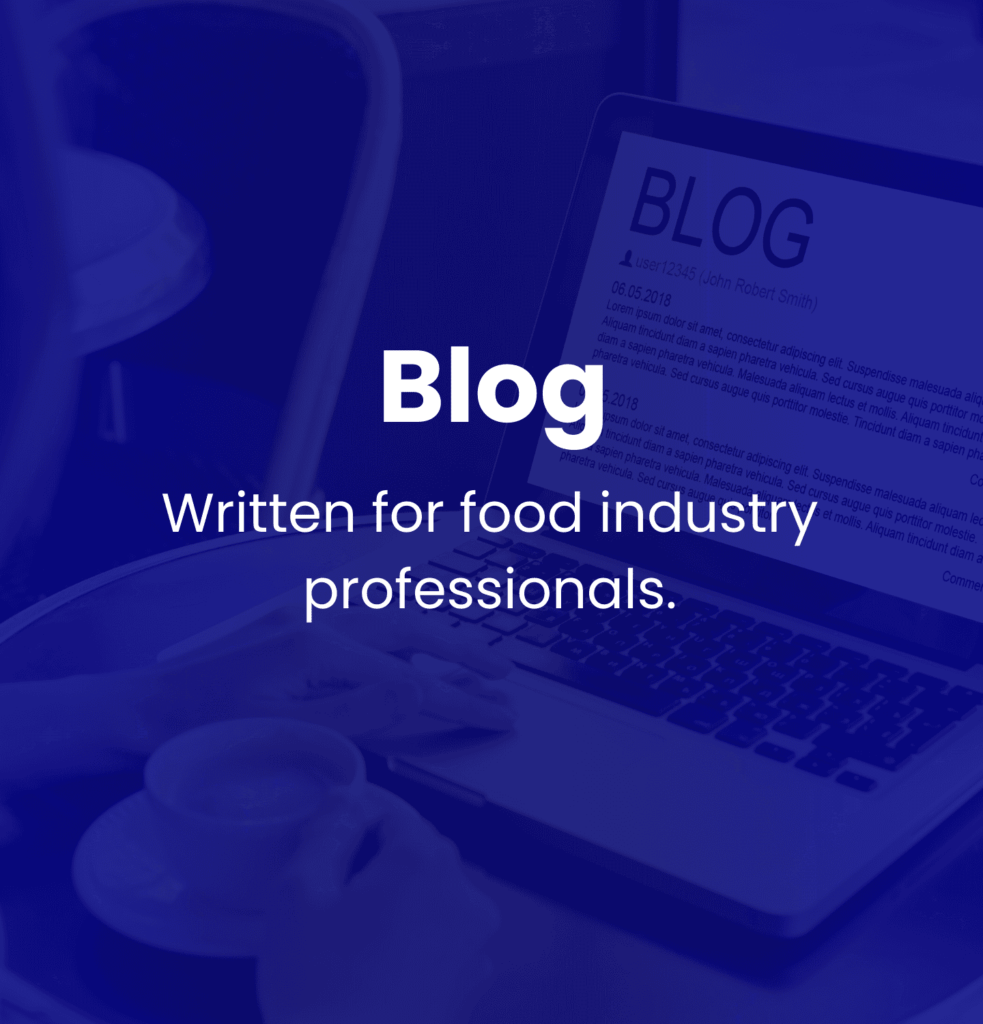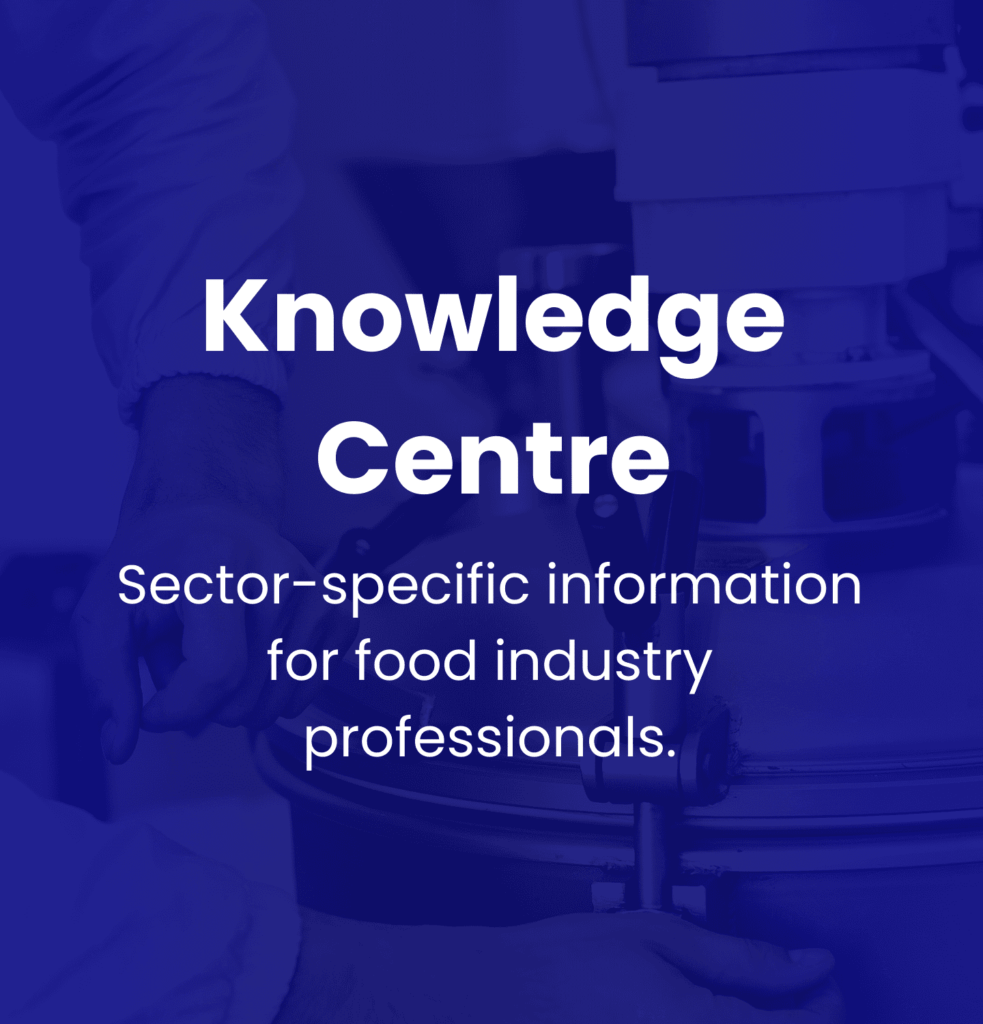Know: Categorisation of Food Quality Defects
Introduction
In food production, recognising and categorising food quality defects is of substantial importance to ensure safety, legality, and value in the market. These defects could have broad effects, affecting consumer confidence and the overall reliability of the food supply chain. Distinguishing a defect and effectively categorising it plays a key role in ensuring adherence to regulatory frameworks, reducing risks, and safeguarding consumer interests.
Defining Food Quality Defects
Defects in food quality encompass a broad spectrum of issues, from physical contaminants and biological hazards to chemical variations that stray from the established standards. Such defects can surface as negative sensory attributes, harmful microorganisms, or foreign materials, which introduce potential health risks or compromised product quality. To counter these challenges effectively, it’s key to specify distinctly the various types of defects and their implications—from concerns for food safety to possible legal repercussions.
Implications of Food Quality Defects
The implications of food quality defects extend across multiple aspects of the industry. Safety is of utmost importance; defects harboring harmful substances may provoke recalls, enforcement actions, or even litigation affecting a company’s reputation. On the legal front, food products must conform to specific standards, and going beyond acceptable levels of defects could invite infractions that bear hefty penalties. Market dynamics also bear the brunt, as defects can reduce product appeal, erode brand trust, and affect the entire market value.
The Role of Categorisation
In this context, the categorisation of quality defects is fundamental. It fortifies food safety protocols by enabling risk assessments and quality controls, maintaining compliance with legal frameworks, and verifying the authenticity of products. This organised method allows for prompt actions in case of defect identification, aiding supply chain adjustments and managing recalls. Additionally, efficient defect categorisation underpins consumer confidence, playing a pivotal role in upholding brand reputation and maintaining market stability.
Major Themes to Explore
As we delve into the complexities of understanding and categorising food quality defects, we will also scrutinise the importance of regulatory frameworks, detection methods, and the nuanced relationship between defects, supply chain operations, consumer trust, and global standards. These themes will provide an inclusive view of the impact of food quality defects on the landscape of the food industry.
Key Takeaways
The categorisation of defects plays an essential role in food safety and safeguarding consumers. It aids in identifying, classifying, and managing food quality defects. Manufacturers, equipped with this system, can navigate safety regulations more effectively and make sound decisions about product approval. The tiers of defect classification typically include minor, major, and critical defects, with the last category marking severe health risks necessitating immediate responses such as product recalls.
Regulatory Frameworks
Regulatory frameworks significantly shape food quality standards as they provide guiding principles for defect management. The Defect Action Levels, outlined by the U.S. FDA, indicate acceptable limits for unavoidable contaminants in food items, establishing an achievable baseline for safety. Adherence to these regulations supports public trust and promotes responsible practices in the food industry. Aligning with international standards, such as those from the Codex Alimentarius, paves the way for enhanced global trading.
Quality Control Methods
Reliable detection and quality control techniques are instrumental in preserving food integrity. Incorporation of state-of-the-art detection systems facilitates the rapid identification of contamination and defects. With these proactive measures, the risk associated with defective products is minimised, reinforcing consumer safety and protecting the integrity of food products.
Impacts on Supply Chain Operations
Food defects can significantly affect supply chain operations, often triggering expensive recalls that disturb production and distribution. These circumstances can impose substantial financial pressures on companies and tarnish brand reputation. By developing potent management strategies, encompassing early detection and risk mitigation, the economic fallout from such defects can be mitigated, maintaining supply chain continuity.
Consumer Trust
Consumer trust is intricately linked to perceptions of food quality. Flaws in food products can drastically shake confidence in brands, leading to declining sales and market share. Businesses that highlight transparency and adherence to safety protocols will be better equipped to retain consumer fidelity and manage market instability.
Global Food Quality Standards
For companies engaging in international trade, understanding the various global food quality standards is indispensable. Distinct regulations are enforced in different countries, and being aware of these differences is crucial for ensuring compliance and avoiding potential recalls or regulatory complications. Businesses that adjust their quality protocols to cater to diverse international standards bolster their competitiveness and safeguard their market interests.
Food Industry Hub Management Systems can significantly boost the effectiveness of your food safety and quality management system, leading to improved confidence and elevated quality assurance throughout your operations.
Understanding and Categorising Food Quality Defects
An awareness of the various types of food quality defects is essential. Any deviations from established quality standards can potentially affect the safety, appearance, taste, and nutritional value of food products. These anomalies can occur at any point within the food supply chain, including during production, processing, storage, and distribution. By understanding these, food manufacturers can better manage product integrity and ensure customer safety. Food quality defects fundamentally belong to three categories: biological, physical, and chemical defects.
Definition and Types of Defects
- Biological Defects: This category includes contamination from microorganisms such as bacteria, viruses, moulds, or insects. For instance, the presence of mold in preserved fruits or traces of insects in ground products might indicate quality issues that could lead to potential health hazards for consumers.
- Physical Defects: These defects refer to foreign objects or structural abnormalities within food items, like shards of glass in packaged products, improper sealing that disrupts the item’s vacuum, or fruit bruising that doesn’t match market grade standards.
- Chemical Defects: These defects are instigated by harmful chemical residues; they might contain heavy metals or excessive pesticide remnants, which could pose health threats to consumers. Consistent testing is essential to mitigate these harmful substances, thereby preserving food safety [Source: FDA].
Three-Tier Defect Categorisation
Defects are often classified according to their severity into critical, major, and minor categories:
- Critical Defects: These defects pose a significant health threat and could cause severe illnesses if overlooked. For example, microbial contamination in products stored without refrigeration is a significant risk that requires urgent measures such as product recalls.
- Major Defects: Although these defects are not immediately hazardous, they can impact a product’s usability or quality over time. An example would be improper sealing that facilities spoilage levels unbeknownst to the consumer.
- Minor Defects: These usually refer to superficial blemishes that do not impede the product’s general safety or functionality. To illustrate, minor dents in packaging or slight discolorations may not affect product marketability [Source: FutureLearn].
Balancing Public Health with Commercial Interests
Within the food industry, there exists a delicate balance between enforcing strict public health precautions and navigating the economical implications that come with managing food quality defects. Critical defects necessitate vigilant management to preserve public health, whereas major and minor defects can be managed within pre-defined Acceptable Quality Levels (AQL). AQL permits organisations to navigate minute imperfections without endangering safety, facilitating a balance of economic efficacy and health regulation adherence.
AQL and Defect Classification
Classification of defects relies on several criteria, with emphasis primarily placed on potential consumer health impacts and product usability. A key player in this evaluation is the Acceptable Quality Level (AQL), which dictates the maximum number of allowable defects before a batch is deemed non-compliant. For critical defects, a zero-tolerance policy is customary, while the threshold for major and minor defects can vary depending on product attributes and customer expectations.
Subdivision of Defects
To implement effective quality control systems, understanding the subdivisions of food defects is essential. These comprise:
- Biological Defects: Examples are moulds in fruits, bacteria in dairy, or insect contamination in packaged products, each presenting significant health risks.
- Physical Defects: This group includes such types as the presence of foreign objects (metal or glass, for example), damaged packaging that could compromise the integrity of the food and defects like bruising or excessive softening resulting in market rejection.
- Chemical Defects: These defects may involve unacceptable levels of pesticides or chemical additives, and the presence of harmful elements that require effective testing protocols to ensure consumer safety.
By diligently understanding and categorising these defects, food manufacturers can devise strategic quality control measures. These not only enhance product integrity but also maintain consumer trust and ensure regulatory compliance.
Regulatory Frameworks and Compliance
UK-Specific Standards
The Food Safety Act 1990 constitutes the foundation of food safety legislation in the UK, designating important responsibilities for food businesses to look after consumer health and ensure food quality. This Act necessitates adherence to regulations enforced by the Food Standards Agency (FSA), centralising its focus on hygiene practices and consumer protection. A key part of this legislative framework is the requirement for food businesses to execute Hazard Analysis and Critical Control Points (HACCP) systems. These systems play a significant role in the identification, analysis, and control of food safety hazards that could occur during the production, storage, and distribution processes.
Understanding FDA Defect Action Levels
In the United States, the Food and Drug Administration (FDA) sets forth Defect Action Levels (DALs) to define what is tolerable as natural contaminants in food products. These guidelines offer insights into what constitutes an adulterated food item; for example, wheat flour can legally contain up to 75 insect fragments per 50 grams without being subject to enforcement.
These levels, although not legally enforceable regulations in the strict sense, guide manufacturers about acceptable contamination levels. An exceedance of these limits could prompt FDA intervention and thereby nudge manufacturers to uphold safety standards in production and processing. Case in point, canned peaches are permitted an average of 3% insect damage before regulatory action is initiated.
EU’s Approach: Balancing Safety and Commercial Practicality
The European Union implements a wide-ranging regulatory framework to ensure food safety, focusing on balancing thorough safety measures with commercial viability. Governed by the General Food Law Regulation (EC) No 178/2002, this legislation emphasises precautionary principles and necessitates stringent risk assessments to protect public health.
Europe’s oversight expands across production, labeling, and food additive regulation, often imposing stricter requirements compared to those in the U.S., especially concerning GMOs and food additives. This regulatory framework displays the EU’s commitment to boosting consumer protection while contemplating the practicality of compliance for food businesses.
Examination of Global Standards: Codex Alimentarius
The Codex Alimentarius is a notable global framework established by the Food and Agriculture Organization (FAO) and World Health Organization (WHO) crated to set up international food safety standards. This body’s objective is to harmonise food safety practices across different nations, to streamline international trade while safeguarding the safety and quality of food products globally.
Codex guidelines cover a broad spectrum of food-related considerations, from food additives to contaminants, and champion best practices for managing food quality. Although adherence to these standards is voluntary, many countries integrate Codex guidelines into their national legislation, thus enhancing public health worldwide.
Comparative Summary
Across the UK, EU, and U.S. regulatory frameworks, the shared intent of these regulations is to safeguard consumer health and improve food quality. The UK prioritises thorough practices and robust enforcement by local authorities, while the U.S. adopts a more lax approach with its Defect Action Levels. The EU puts emphasis on severe safety standards while maintaining commercial practicality through its comprehensive regulations. The Codex Alimentarius acts as an important international standard, attempting to narrow the disparity in food quality regulations across regions, thereby promoting a safe and equitable global food trade. Understanding these regulatory frameworks is essential for food manufacturers as they navigate compliance complexities in different markets.
Sign-up for the Food Industry Hub Mail Service
We regularly produce new content for food industry professionals, and the Food Industry Hub Mail Service is the best way to stay up to date with the latest additions.
Signup today to be added to the Food Industry Hub mailing list.
Detection and Quality Control Methods
Analytical Methods: Sensory Evaluations and Instrumental Tests
In the quest for food quality control, analytical methods play a pivotal role. Chief among these methods are sensory evaluations and instrumental tests. Sensory evaluations use human assessors who rely on their senses to appraise a product’s taste, smell, texture, and appearance. These evaluations are adept at picking up on subtle quality variations that might escape instrumental detection. Although inherently subjective, this method employs the expertise of trained panels to provide consistent evaluations that are meaningful for consumer acceptance and market preferences. However, the variable nature of human perception can result in assessment inconsistency across different evaluators [Source: PMC].
Conversely, instrumental tests offer a more objective way to judge food quality. Techniques such as Raman spectroscopy and near-infrared (NIR) spectroscopy have gained prominence. Raman spectroscopy is particularly commendable for its swift identification and quantification of harmful impurities like pesticides and heavy metals. NIR spectroscopy presents a non-invasive way to gauge attributes like moisture and fat content, thus boosting efficiency in food processing without product damage. Technological advancements in these areas offer improved precision and quick analysis which are key to regulatory compliance and consumer expectations.
The Role of Detailed Inspections: Manual and Visual Inspections
Manual and visual inspections are essential for the early pinpointing of defects in food products, forming a frontline defense against quality issues. Manual inspections involve skilled inspectors scrutinising products for visible flaws, such as discoloration and scratches. This method is cost-effective and easy to implement. Nevertheless, its efficacy leans heavily on the inspector’s skills, and variable results can sometimes miss unnoticed issues.
Integrating visual inspection technologies can bolster defect detection capabilities significantly. Techniques that use machine vision and imaging systems offer an in-depth analysis of food products, spotting both visible and microscopic defects quickly. The application of computer vision combined with advanced imaging algorithms not only improves defect detection accuracy but also minimises the risk of human error and enhances the efficiency of quality control processes on production lines [Source: Frontiers in Nutrition].
Importance of Microbiological Testing
Microbiological testing is essential to food safety, focusing on the detection of pathogenic bacteria, spoilage microorganisms, and adherence to hygiene standards. Regular and rigorous testing procedures are needed to identify hazards like E. coli, Salmonella, and Listeria, which pose serious health threats to consumers. Ongoing laboratory assessments are necessary, not just for regulatory compliance, but also for safeguarding public health and building consumer trust in products.
Incorporating advanced methods such as the Polymerase Chain Reaction (PCR) expedites pathogen identification. This allows food manufacturers to respond quickly to contamination issues and greatly reduce risks associated with foodborne outbreaks, demonstrating the key role microbiological testing plays in the food industry.
Emerging Technologies: Digital Tools, AI, and Automation
The onset of emerging technologies, incorporating digital tools, artificial intelligence (AI), and automation, is transforming defect detection and quality control in the food industry. Automated inspection systems that exploit machine vision and AI conduct real-time assessments of food quality. Here, deep learning algorithms significantly enhance the efficiency of defect classification and identification [Source: Photonics]. For instance, Convolutional Neural Networks (CNNs) are able to analyse product images with impressive speed and accuracy, facilitating swift decision-making in quality management.
The fusion of these technologies with instrumental methods like Raman spectroscopy and hyperspectral imaging augment the capacity for contaminant detection, enabling faster and more precise quality assessments. Such innovations not only streamline quality control procedures but also ensure that manufacturers can meet the rising expectations for food safety and quality.
Impact on Supply Chain and Recall Management
Recall Triggers
Product recalls in the food manufacturing industry are typically triggered by events of notable concern such as manufacturing defects, contamination, and safety hazards that are identified post-product release. Defects in manufacturing often arise from various process errors, resulting in non-compliant products. Contaminants, whether biological (e.g., E. coli), chemical (e.g., pesticide residues), or physical (e.g., metal fragments), present significant health threats and frequently trigger recalls. This emphasises the necessity for robust quality control measures throughout the supply chain. Timely detection and management of potential recalls is facilitated by an active approach to monitoring and appraising production practices and associated supply chain risks, in turn protecting consumer welfare and reducing liability for manufacturers.
Successful recall management hinges on a unified plan encompassing mechanisms for swift identification, risk evaluation, and comprehensive communication. The capacity for rapid and accurate tracing of defect origins is essential, as delays or missteps can have far-reaching effects on consumer safety, and significantly harm the financial position and reputation of the manufacturer.
Exploring Financial Consequences
The financial impacts of recalls can be extensive, encompassing both direct and indirect costs. Direct expenses typically cover logistics related to product retrieval, disposal, and regulatory compliance. Indirect losses can affect the company through reduced sales, decreased market share, and damage to brand reputation. Studies suggest that inefficiently managed recalls can lead to a marked decline in consumer trust, impacting a brand’s image and market performance over an extended period [Source: Global Food Safety Resource].
In response to these financial impacts, it is crucial for organisations to establish thorough financial recovery strategies. Such strategies may involve leveraging contractual agreements with suppliers to share recall costs, along with the usage of insurance to offset financial losses. Detailed documentation of losses during a recall can aid in financial recovery efforts and serve as a valuable input for risk assessments and future preventive measures.
Supplier Accountability
The dynamics of supplier accountability are rapidly changing in the context of food quality defect management. As food manufacturers increasingly rely on global supply chains, the intricate supplier relationships necessitate a focused approach on quality assurance and contractual responsibilities. An increasing number of companies are integrating indemnification clauses into contracts, thereby transferring some of the recall-related risks back to suppliers. This not only ensures heightened accountabilities amongst partners but also inculcates a shared responsibility for product quality within the supply chain.
Comprehensive supplier qualification and auditing processes are gaining popularity, enabling manufacturers to better handle risks associated with suppliers. By setting clear quality standards and maintaining constant communication, manufacturers can improve compliance with safety standards. This transformation is vital for managing quality defects intricacies and ensuring effective and swift response during recalls.
Such advances promote a more resilient supply chain capable of swiftly responding to defects and prioritising consumer safety, while also maintaining trust. Building robust relationships mitigates risks and strengthens overall quality assurance within the food manufacturing sector.
Consumer Trust and Market Implications
The Importance of Transparency in Food Labelling
Transparency in food labelling is an influential driver of consumer trust. This transparency is realised by supplying clear, comprehensive, and honest information about ingredients, sourcing, and production methods. Providing such insight allows consumers to make purchase decisions that are in line with their health objectives and ethical values. This, in turn, boosts brand loyalty and consumer confidence. Studies indicate that more than 70% of consumers favour brands that demonstrate honesty in their promotional efforts. This statistic underlines the connection between transparency and consumer buying behaviour.
Transparency is facilitated by accurate disclosure of ingredients, sourcing information, and insight into production methods. The importance of listing ingredients accurately is underscored as dietary restrictions grow more common. Similarly, issuing sourcing information appeals to consumers interested in sustainability and ethical practices, making it a crucial aspect of modern food marketing strategies. Labels that showcase organic certifications or non-GMO statuses further underscore a brand’s commitment to integrity and quality standards.
Technology advancements have improved transparency in food labelling. The integration of features like QR codes on packaging allows companies to offer consumers immediate access to additional product data, fostering an engaging and trust-building relationship.
Authenticity and the Repercussions of Fraudulent Claims
False claims about food quality can have grave implications; they markedly erode consumer trust and can lead to significant negative market effects. Dishonest statements regarding product quality, such as inaccurate claims about ingredients or sourcing, compromise consumer trust. They also risk legal liabilities for brands and damage to their reputation. For instance, deceptive advertising can instigate product recalls and incur regulatory penalties under food safety legislation.
The fallouts from such deceptive practices extend beyond immediate legal concerns. As consumers learn about misleading claims, they develop doubts about the brand, which can lead to a long-term drop in customer loyalty. A study revealed that nearly 80% of consumers stated they would stop buying a product they perceive to be deceptive. This finding underscores the significance of authenticity in advertising. Therefore, companies must uphold truthful marketing practices to evade the pitfalls linked with misinformation.
The Influence of Digital Media on Food Defect Issues
Digital media has revolutionised the way food safety and quality issues are communicated. Social media platforms act as powerful tools that amplify discussions about food defects and false claims. Information concerning product failures can spread swiftly via these platforms, dealing a severe blow to consumer trust when these incidents are publicly exposed. Moreover, consumers utilise digital platforms to relay their experiences, creating a public forum that can either strengthen or undermine a brand’s standing.
Despite the challenges associated with the quick spread of negative information, brands can leverage this as an opportunity for proactive engagement. Companies that respond to consumer enquiries transparently amidst potential crises stand a better chance at retaining trust and loyalty in the face of scrutiny. By creating clear lines of communication and demonstrating accountability, brands can more effectively manage the evolving landscape of consumer expectations.
Global Standards and Regional Variation
Understanding global standards and regional variations in food quality is indispensable for professionals in the food manufacturing industry. This knowledge allows manufacturers to maintain product quality and food safety across diverse markets, adapting to regional regulations and meeting differing consumer expectations. The focus in this discussion will be on the UK’s assurance schemes, the US’s risk-based approach, and key international variations.
The UK’s Emphasis on Assurance Schemes
In the UK, food quality assurance schemes play a significant role in elevating food products to established safety and quality standards. Although these schemes are largely voluntary, they’ve garnered substantial support from retailers and consumers alike, as they endorse trust in the food supply chain. Here are a few noteworthy ones:
- Red Tractor Assurance: This far-reaching initiative covers sectors like meat, dairy, and crops. It centres on the farm-to-fork traceability while exhibiting commitment to elevated food safety and animal welfare standards. The Red Tractor logo assures consumers that the food purchased originates from farms that meet stringent criteria—a fact validated by regular independent inspections under the observance of the United Kingdom Accreditation Service (UKAS)[Source: Red Tractor].
- Lion Eggs: This assurance scheme confirms that eggs meet strict safety and quality procedures. This emphasises the significance of quality control from the farm to the consumer.
- Quality Meat Scotland (QMS): Certifying that meat products are sourced from animals raised under comprehensive welfare standards, this scheme assures the quality of the production chain in Scotland[Source: Quality Meat Scotland].
- Farm Assured Welsh Livestock (FAWL) and Northern Ireland Farm Quality Assurance Scheme (NIFQAS): Both schemes are tailored to accommodate local practices, reinforcing consumer confidence in the quality assurance of meat production in Wales and Northern Ireland respectively.
Overall, these schemes act as a service to transparency in the food supply chain and play a significant role in maintaining high food quality and safety standards; a necessity in a competitive market.
The US’s Risk-Based Approach
Food safety in the United States is majorly governed by a distinct risk-based approach, led by the Food and Drug Administration (FDA). This method is centred on pinpointing potential hazards within the food production system and employing effective controls to mitigate these risks. The Hazard Analysis and Critical Control Points (HACCP) principles are integral to this approach; they require food manufacturers to systematically evaluate their production processes and install controls at critical points to inhibit foodborne illnesses.
In this regard, the FDA’s Food Code is instrumental in establishing a framework for secure food handling, preparation, and service practices. The code encourages food establishments to bring ingenuity to their processes, given that they can prove compliance with established safety protocols.
Risk-based inspections designate regulatory oversight in accordance with the level of risk associated with specific food production facilities. By targeting inspections based on risk, resources can be allocated where they’re most effectively utilised, thereby enhancing food safety across the supply chain.
Core International Variations
Management of food quality defects demonstrates significant regional variations globally, particularly concerning microbiological limits.
In many Asian countries, such as Japan and South Korea, meticulous regulations govern microbiological controls, which frequently involve extensive testing protocols to control pathogens in an array of food products. This reflects a prominent societal focus on food safety, which often surpasses that found in Western countries.
On the other hand, the European Union upholds comprehensive regulations concerning hygiene, traceability, and consumer protection, which align or exceed those found in the UK and the US. The EU’s regulations are designed to ascertain that food safety is a primary concern from production to consumption[Source: European Commission].
In Latin America, countries such as Brazil and Argentina focus on food safety regulations aligned with international standards set by bodies like Codex Alimentarius. This showcases the worldwide trend towards homogenisation in food safety practices[Source: Codex Alimentarius].
These regional nuances not only reflect varying health priorities and consumer demands but also cultural attitudes towards food safety. They underline the importance of customising approaches within global food manufacturing practices.
Conclusion
The Role of Food Defect Classification Systems
Food defect classification systems are undeniably central to the food manufacturing industry, functioning as primary tools for securing the safety and quality of food products. These systems allow manufacturers to spot, classify, and manage defects in a systematic manner. These defects can range from mere aesthetic issues to potentially harmful health risks. The organised structure provided by these systems bolsters quality control processes within companies and facilitates adherence to regulatory guidelines such as the FDA’s Defect Action Levels (DALs)—guidelines that determine acceptable defect levels for food items in a way that they don’t pose any health dangers [Source: FDA]. Consistent and properly classified food supplies play a key role in building and maintaining customers’ trust, which is essential for competitiveness in the market.
Existing Challenges and Enhancements to Regulatory Frameworks
In spite of the pivotal role food defect classification systems play, the food industry still contends with numerous challenges ingrained in its regulatory structures. The FDA’s DALs, for instance, often act merely as guidelines rather than mandatory regulations, resulting in disparities in compliance across different sectors of food manufacturing [Source: Certified Laboratories]. Addressing these issues necessitates refining these frameworks by integrating adaptive measures that cater to the advances in technology and newly surfacing defects. Regular appraisals of defect thresholds in line with scientific progress and market demands are indispensable for maintaining effective quality management systems.
Significance of Robust Detection and Quality Control Procedures
Competent detection and thorough quality control procedures are essential in ensuring public health and making certain that products are not contaminated. Innovative technologies such as Light Filth Extraction and Foreign Matter Identification contribute to the early detection of contaminants, including rodents and insects, thus shielding consumers from potential risks [Source: Czech Journal of Food Science]. The implementation of robust quality control systems aids in meeting regulatory standards and enhances the overall integrity of food products.
Impact on Supply Chain Management, Consumer Trust, and International Market Dynamics
The repercussions of food quality defects reach significantly beyond production facilities, notably influencing supply chain management and consumer trust. Effective defect management has the potential to mitigate costly product recalls, which can damage brand reputation and lead to financial losses. Studies indicate that trust in food quality is directly related to the efficacy of defect management practices, emphasising the need for manufacturers to maintain consistently high standards. Additionally, the disparity in quality control practices across different regions may impact global market dynamics—regions with more rigorous regulatory environments may offer their local producers a competitive edge.
Regional Differences and the Pursuit of Continuous Improvement
There are noticeable regional disparities in the management of food quality defects, primarily due to differences in enforcement of regulations and consumer expectations. While frameworks like HACCP (Hazard Analysis and Control of Critical Points) are widely accepted, their practical application can vary significantly between countries. Continuous improvement practices should aim at adapting local procedures in line with global standards. By acquiring insights from diverse geographical practices and incorporating new technologies, the industry can improve their defect management systems and ensure consistent quality worldwide.
Food defect classification systems are vital in safeguarding food safety and quality within the industry. Overcoming ongoing challenges through regulatory improvements and efficient detection methods, and aligning practices across regions will fundamentally strengthen the resilience of the global food supply chain in the future.
About The Food Industry Hub Knowledge Centre
The Food Industry Hub knowledge centre delivers informative content on a variety of topics pertinent to the food manufacturing industry.
You can return to all topics by clicking here.
From The Food Industry Hub Signposting Service
Additional resources from The Food Industry Hub Signposting Service.
From The Food Industry Hub Blog
Expanding on this topic with related content from our blog.

